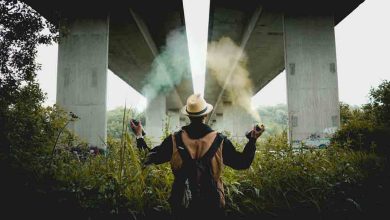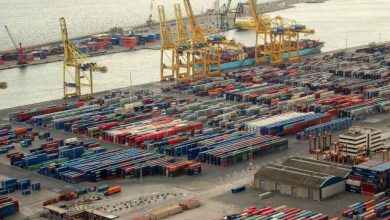Life Style: Arab celebs, fans react to Lebanese dance group Mayyas’ ‘America’s Got Talent’ win

Gulf Photo Plus’s annual community exhibition ‘Slices of life’ presents food for thought in Dubai
Abdul Majeed Rodhan — ‘Eid Iftar’
Unsurprisingly, iftar is the subject of a number of images in the show — breaking fast during Ramadan being a time when food is central to everyone’s life in the region almost simultaneously. Saudi photographer Rodhan presents a very personal take on iftar, with this image of his father and brothers taken at his uncle’s house. “Eid Iftar reflects the generosity of sharing love and food. Before the COVID-19 pandemic, there was a large gathering of neighborhood people who were joyfully meeting by bringing different meals to gather and congratulate each other. Unfortunately, this tradition (had to be) scrapped. However, we made a small, cozy family gathering to continue the tradition,” Rodhan told Arab News.
Harsha Pandav — ‘Community Iftar’
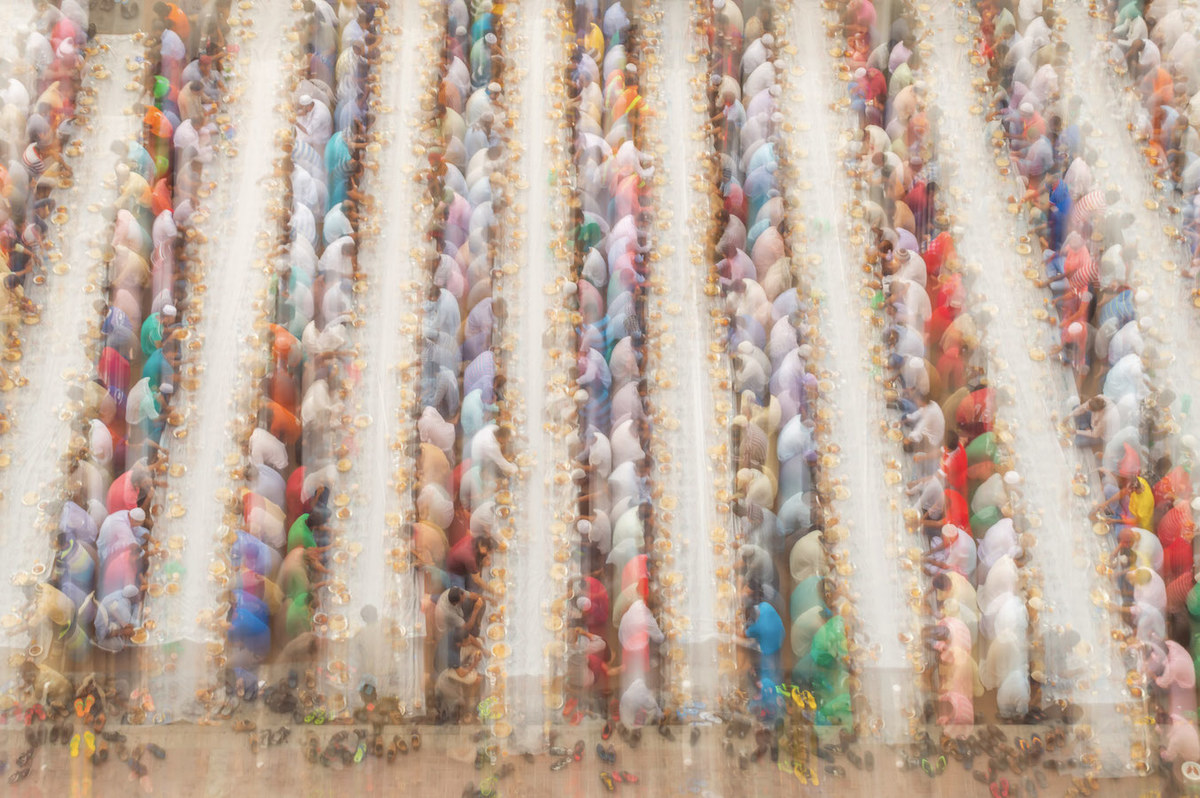
The UAE-based Indian photographer also focused on iftars for her submission — in this case a community iftar in a parking lot at a Dubai mosque in 2017, “attended primarily by resident expats from mid- to low-economic status.” “In the image, I’ve intentionally blurred together individuals of various backgrounds to visually articulate the sense of community across cultural and national, sometimes interfaith, borders that can be born of the power of food to bring people together, especially juxtaposed against other cross-national traditions,” Pandav told Arab News. “I was hoping to invite discussion around the potential of food and public spaces and their place in context to belonging, nostalgia, and the possibility (of) anchoring oneself to a sense of safety and community in a rapidly changing city.”
Ahmed Al-Shorouqi — ‘Fishmongers’
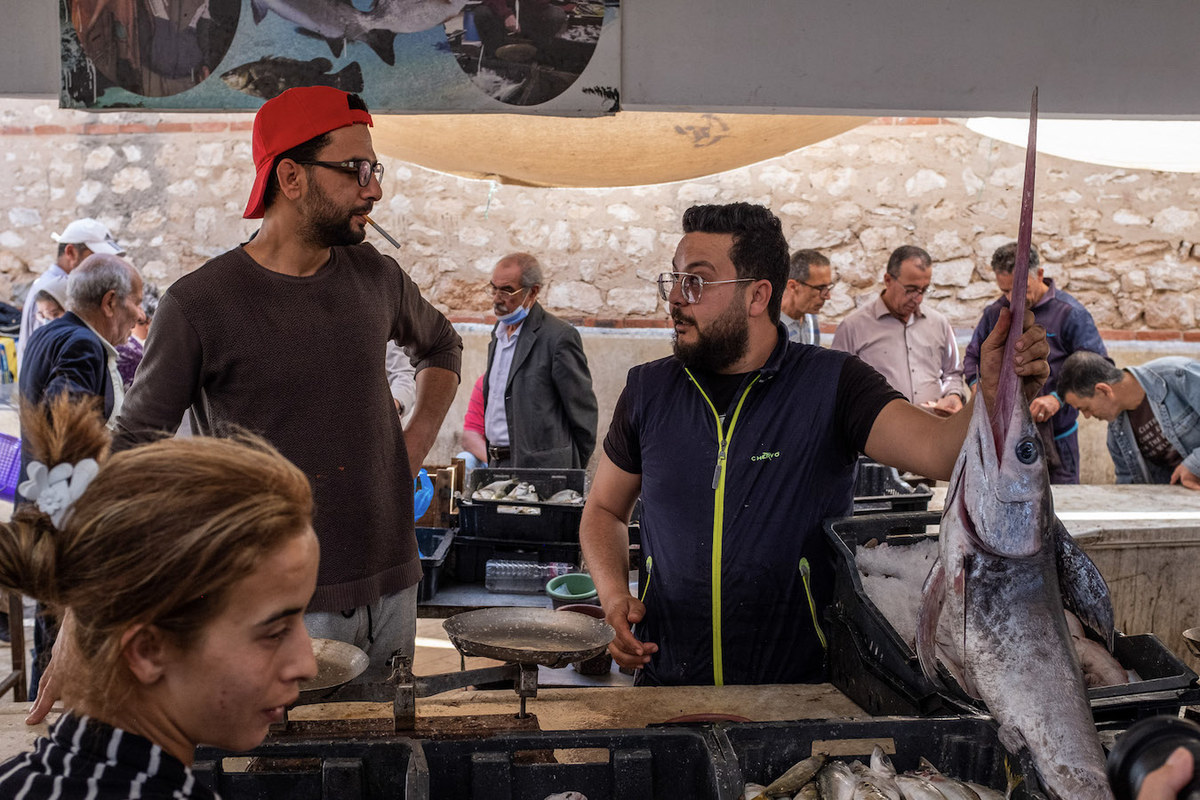
Al-Shorouqi’s image highlights the economic importance of food to so many. It shows two fishmongers at Souk Al-Hout, one of Tunisia’s biggest fish markets. “I like this picture because it is showing confidence versus negotiation,” he told Arab News. “The merchant holding the fish seems to be determined to convince his partner that the catch is good, while the merchant in the red hat stands confidently with a cigarette in his mouth and doesn’t look like he is going to change his mind any time soon.”
Katarina Premfors — ‘Fatima’s Goats’
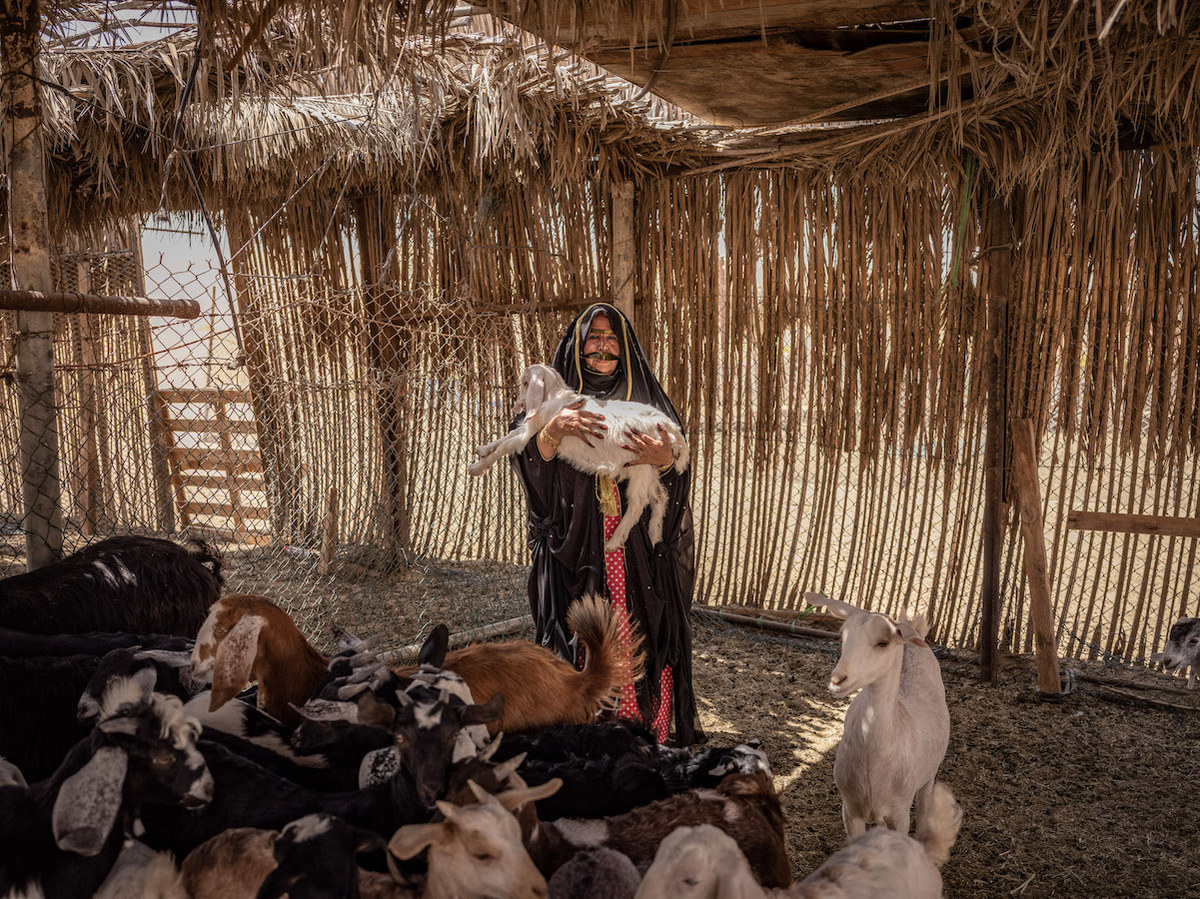
Premfors presents an image that is part of a series she has shot of a remarkable Emirati farmer and camel dealer called Fatima Al-Hameli. Here, Al-Hameli — a feminist trailblazer with a significant social-media following — is feeding a goat from one of her farms in Liwa. “She stays in the desert,” Premfors wrote in her caption for the image. “She detests shopping malls and spending too much time in the city. To be away from the sand is to be a fish out of water.” “Fatima is an extraordinary woman in many ways,” Premfors told Arab News. “I love how she is so involved with the whole ecosystem of her life. From breeding the grass that feeds the goats and camels, to the slaughter of the goats for food, she loves and nurtures everything. She has been sustainable all her life, long before it became (fashionable). Going on a desert walk with her she will suddenly drop to the ground to catch a lizard and say, ‘We used to grill these.’ Next moment, she will get me to taste some grass, then howl with laughter when I declare it bitter. Then I realize it’s just ordinary grass and not some ancient foraging secret…”
Rana Khadra — ‘Wakan’
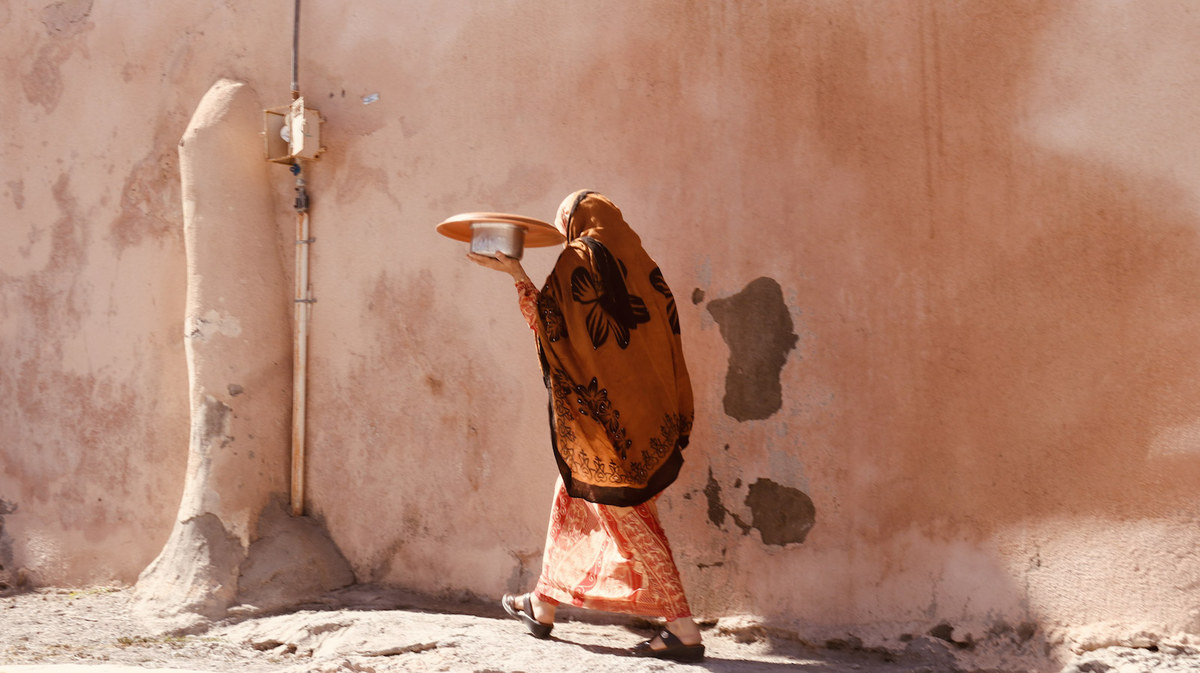
Khadra’s image was taken in the titular village in Oman, famed for its almonds, and shows a woman carrying food from her house to her neighbor. “To me, this was the best representation of Arab culture,” Khadra said. “It’s so beautiful and so common. I also really love seeing how people start dressing like the colors of the walls that surround them.”
Shyjith Kannur — ‘Goat Attack!’
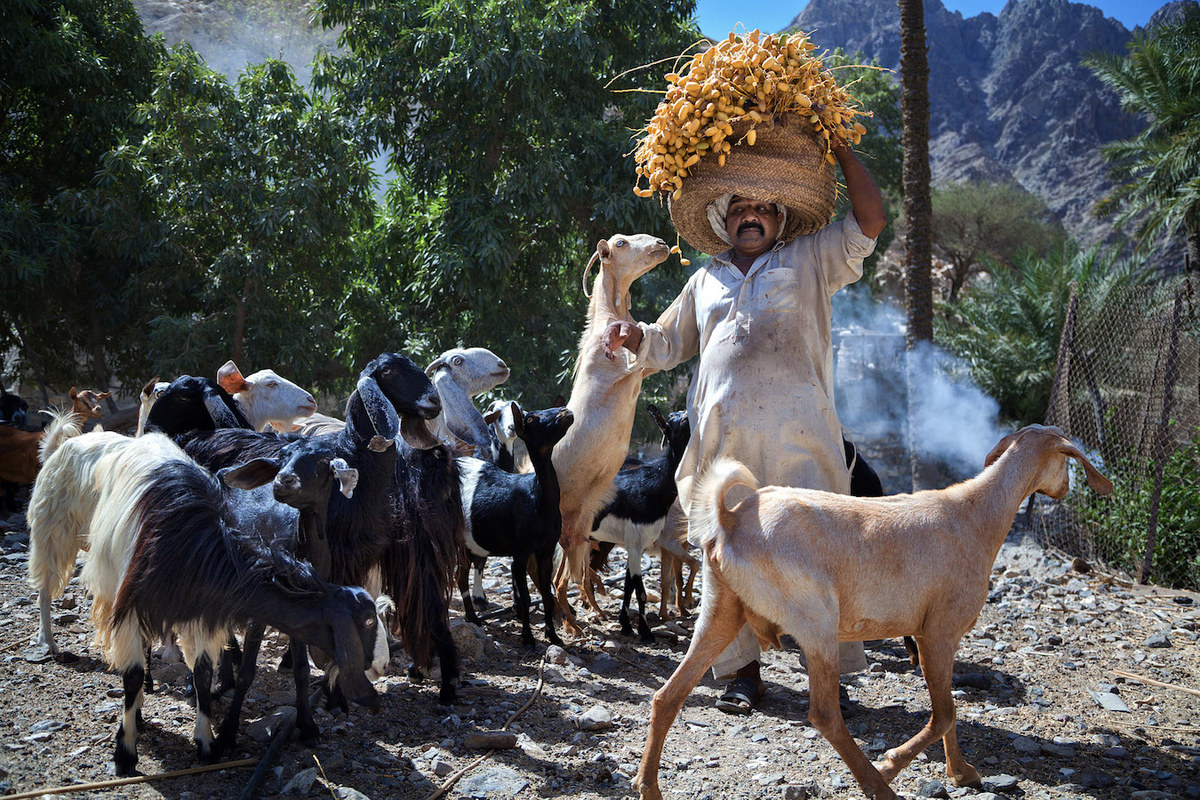
Kannur’s humorous image was taken in Fujairah, UAE, in 2015 and shows a date farmer struggling to escape a horde of goats intent on grabbing their share of his haul. “It was a fun moment to photograph,” Kannur said. “The farmer was helpless to prevent the basket from falling, as reflected on his face.” The photographer explained that he wanted to “showcase a picture that connected with the pride of the UAE — dates. Everyone know how important they are to the lifestyle in this part of the world.”
Sondos Azzam — ‘Naranga’
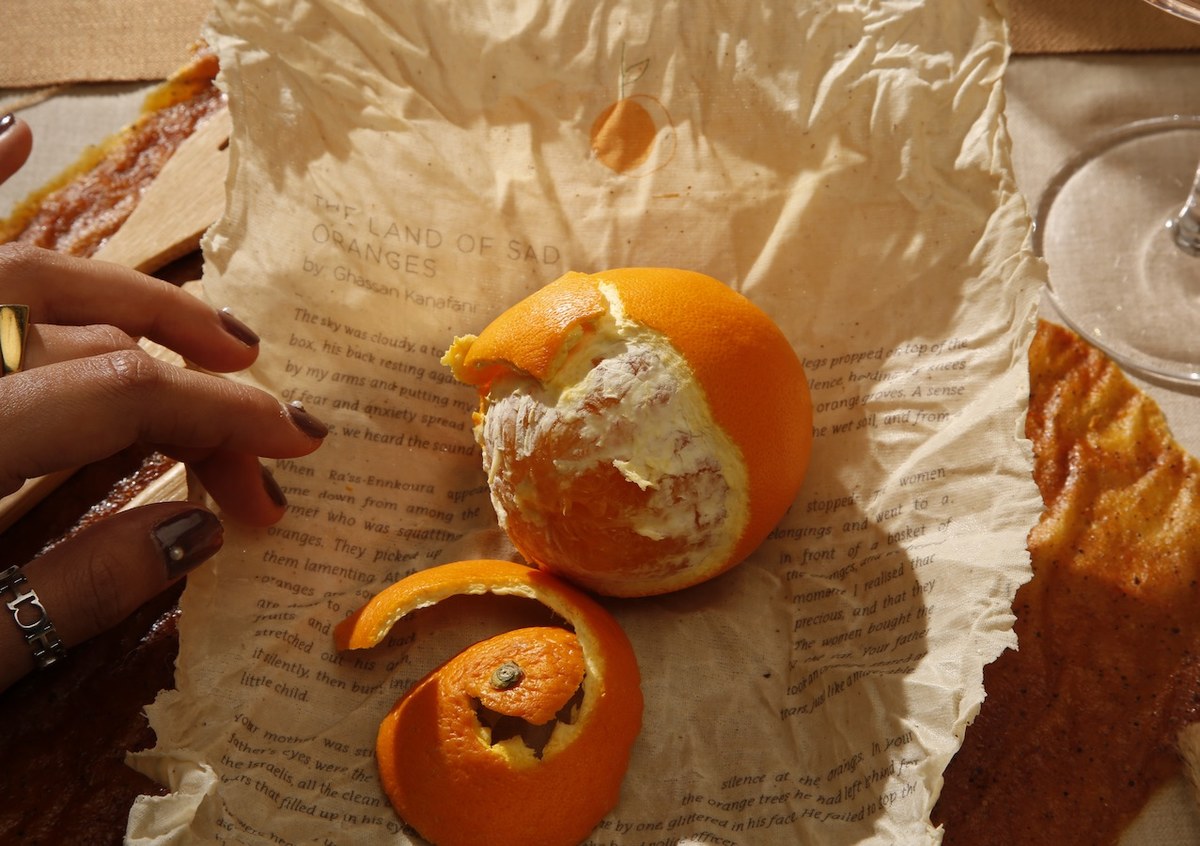
Azzam’s “multi-sensory project,” which began as a dining experience, “explores the collective memory of the Yaffa orange through the Palestinian narrative, questioning the fruits legality.”
This image, she explained, “alludes to the sense of remembrance when encountering the orange wrapped in excerpts from ‘The Land of Sad Oranges’ by Ghassan Kanafani. I felt this image illustrated a pivotal point in the experience, introducing elements of memory and nostalgia.”
Ahmed Abdulameer — ‘Seihah’
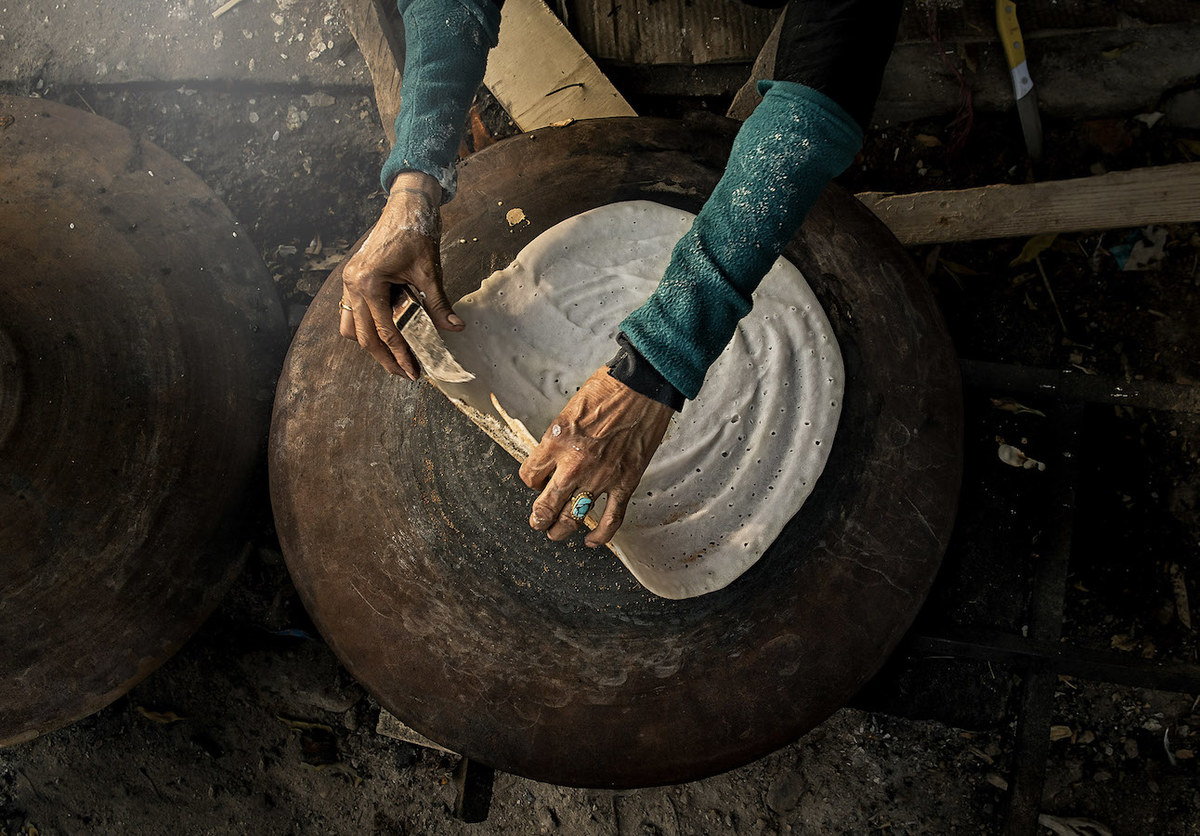
This image shows a woman in Iraq’s Basra Governorate preparing the titular thin bread made of rice flour, popular with tourists. The liquid dough is poured into a metal disc, which is then heated over a fire and flattened by hand. Abdulameer chose to submit this image, he said, because “the details of the hands mix the heritage of the south and the fatigue of the years for the Iraqi woman.”
Ahmed Mostafa — ‘Iftar Table’
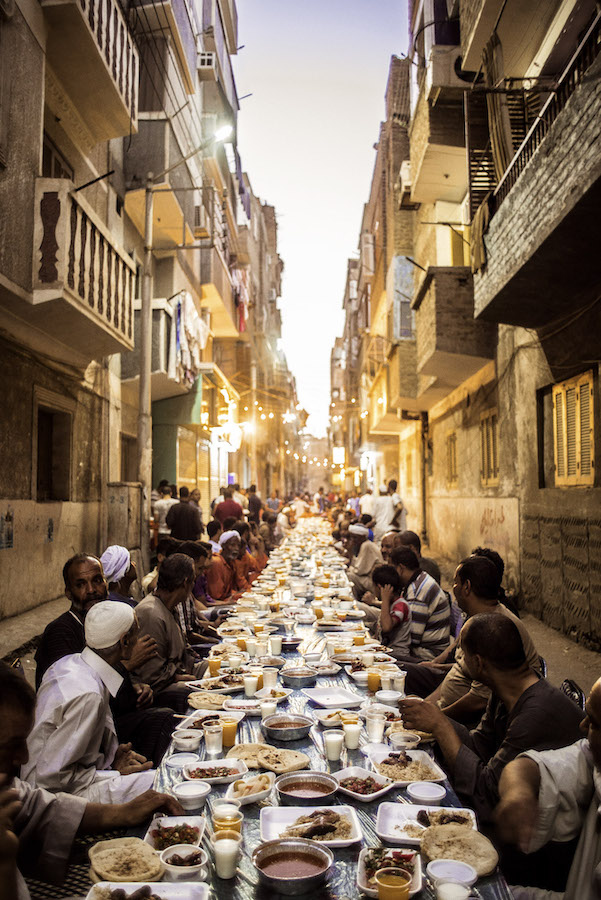
This 2019 photograph shows hundreds of people gathering for iftar in Qena, Egypt. “I love the story behind this picture,” Mostafa told Arab News. “These scenes tell of my first participation in the work from the beginning to the end. We, the people of the city of Qena, gathered to revive that old custom in our street in order to feel the connection between us. It was the first time that we young people set up that table and invited all the people to share the food with us, in addition to that beautiful spiritual feeling and the revival of popular heritage in Egypt.”
Ishaq Madan — ‘Seafood’
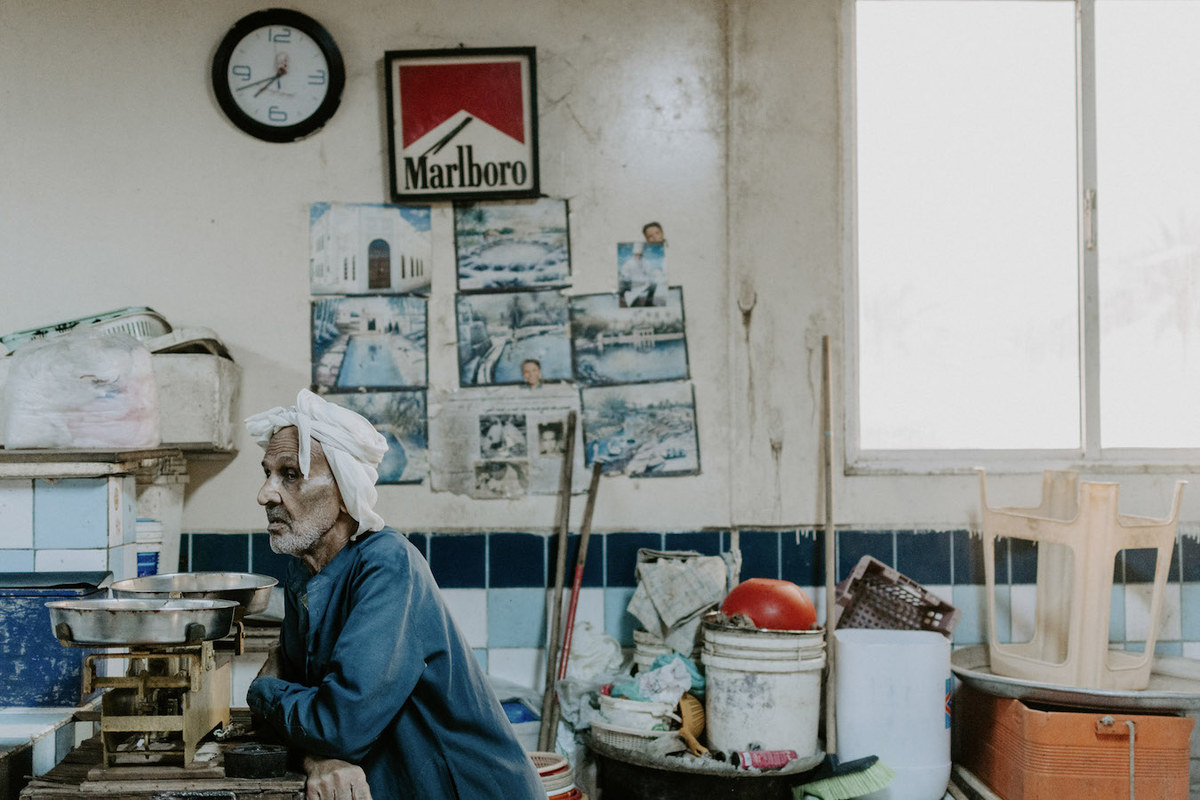
Madan’s 2017 image is part of his “Dead Fish Tell No Tales” series, which, he told Arab News, “attempts to comment on climate change’s negative impact on the fishing industry in Bahrain, given that seafood is one of the major staple dishes. The image is symbolic in the sense of how time is running out and populations of different species of fish have been declining over the years. At the same time, the subject’s facial expression reflects a weary and troubled mind.”
Jed Bacason — ‘Roadside Vendor’
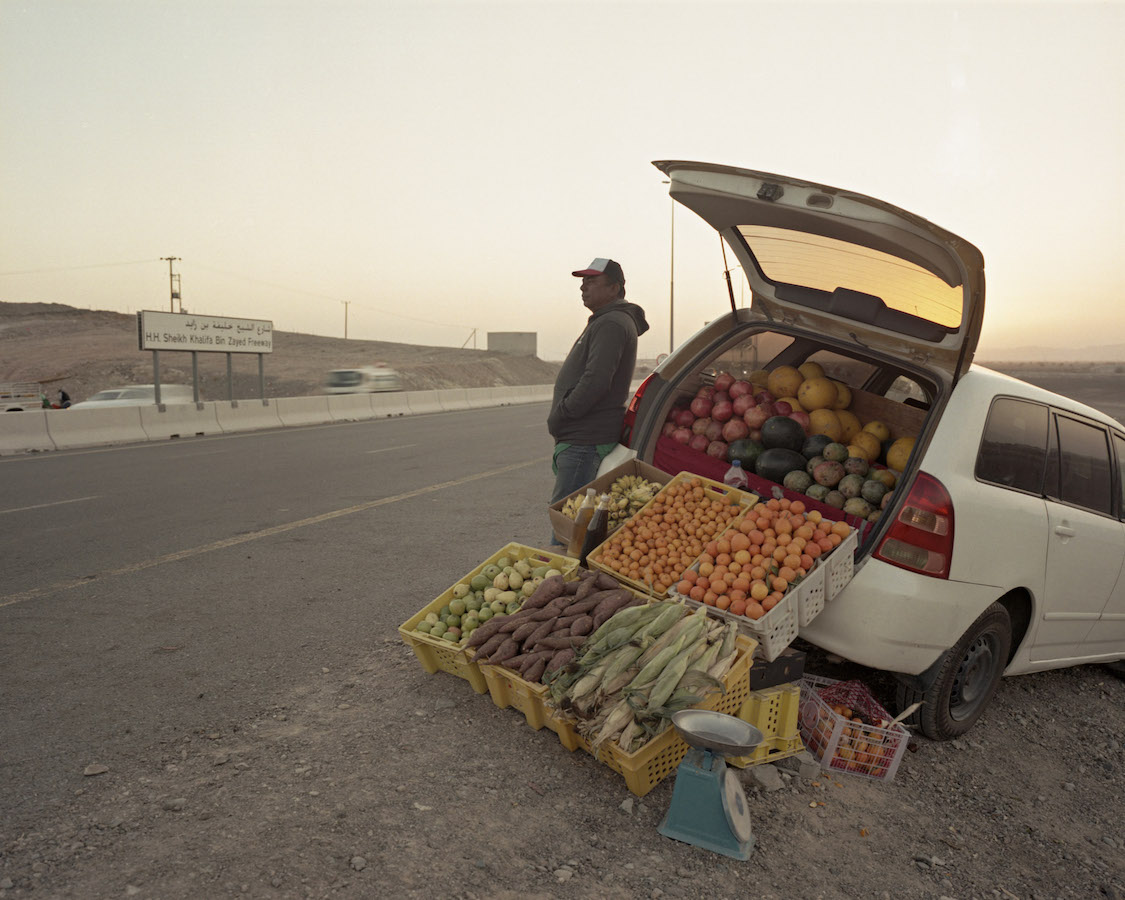
Bacason’s 2017 image shows a roadside fruit vendor on the Dubai-Sharjah road in the UAE. “Fruit sold here is usually a fraction of the prices in the city, but competition with other roadside fruit vendors is stiff. Since fruits are perishable, vendors have to resort to almost breakeven prices in order to dispose of them, bring a small profit home, and put food on the table,” Bacason wrote in his exhibition caption. “The photo resonated with me because I’m also a father working hard to put food on the table for my family,” he told Arab News. “It not only relates to the show’s theme, but I think it speaks about us, as migrant workers, providing for our loved ones. The poignancy of the vendor standing on a lonely highway still waiting for customers despite it being night time already hopefully relays my idea to the audience.”
Mona Hassan — ‘Betau Bread’
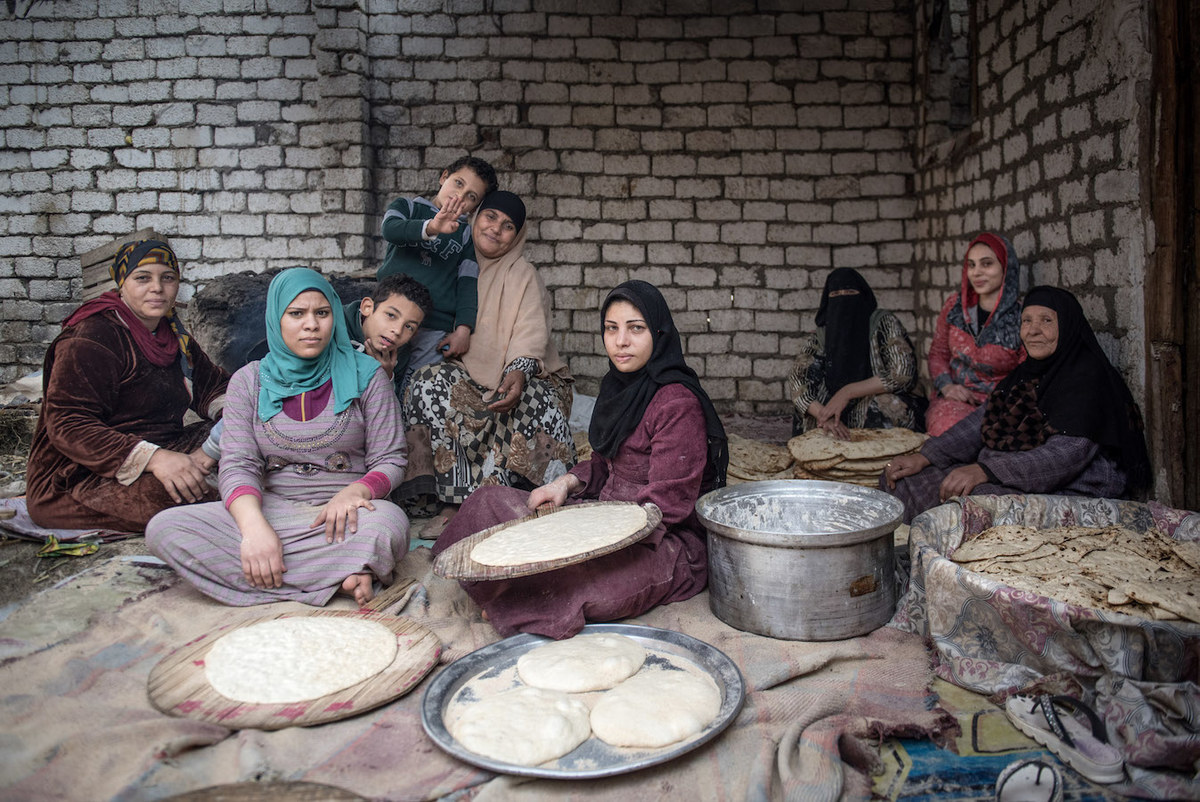
The Egyptian photographer submitted this image of a group of women making traditional Betau bread. “The history of Betau goes back to the Pharaonic era and it was passed down through generations until it reached us,” she told Arab News. “The evidence for this is that the word Betau is a hieroglyphic word meaning ‘The food of the gods,’ because it is one of the best foods of all. I loved the participation of women of all ages in making bread, and the real joy is in the smell of the dough and its baking, as the house warms up and the children crave the moment it comes out fresh from the oven.”
Noting that the news was copied from another site and all rights reserved to the original source.
xnxx,
xvideos,
porn,
porn,
xnxx,
Phim sex,
mp3 download,
sex 4K,
Straka Pga,
gay teen porn,
Hentai haven,
free Hentai,
xnxx,
xvideos,
porn,
porn,
xnxx,
Phim sex,
mp3 download,
sex 4K,
Straka Pga,
gay teen porn,
Hentai haven,
free Hentai,
